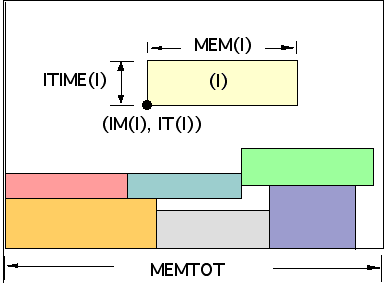Computer Controlled Seesaw
1998 SKADRON PRIZE IN COMPUTATIONAL PHYSICS

Develop a subroutine that controls the motion of two identical balls that slide under the influence of gravity on a 2 meter long frictionless seesaw beam pivoting about the center of the beam. The balls are allowed to slide for a time interval DT during which the seesaw has a constant slope angle a. After each time interval your subroutine should return a new value of the slope angle a to be used to continue the evolution of the balls for the next time interval. At the ends of the seesaw there are perfectly reflecting boundaries. In case the two balls collide, they will perfectly reflect off each other. The goal is to predict an angle as such that the "distance" from each ball to the center of the seesaw, x12+x22, is as small as possible after each interval. The precise value for the duration of each time interval DT will be a random number uniformly distributed between 0 and 100 milliseconds.
The Challenge
Write a Fortran subroutine CHOICE(X1,V1,X2,V2,SLOPE_ANGLE), which uses the present location and velocity for ball-1 (X1, V1) and ball-2 (X2, V2) as input parameters to compute a new slope angle SLOPE_ANGLE as output. This angle will be used for the evolution of the balls during the next interval from their position and velocities at the end of the previous interval. The initial condition for the first interval for the balls is x1 = -0.5 m, v1= 0.2 m/s, x2 = 0.3 m, v2 = -0.1 m/s. The slope angles must be in the interval -45<45. Use g = 10 m/s2 for the acceleration due to gravity.
The Prize committee will load your control subroutine CHOICE into its master code which simulates the motion of the two balls. Your subroutine has to provide the values of the slope angles for 10000 time intervals. The distance x12+x22 will be computed after each time interval and the winning subroutine minimizes this quantity averaged over all 10000 intervals.
Prize
$300 ($ 200 for the winning team, $100 for the second best team).
Who can participate
Any Physics majors in the Department of Physics at ISU.
Deadline
4 pm, January 18, 1998. The winner will be announced at the first departmental colloquium of the Spring 1999 semester..
Questions
A copy of the Fortran code that simulates the motion of the balls for a given slope angle can be obtained from any member of the Skadron Prize committee: Drs. R. Grobe, R.F. Martin, and Q. Su.